Rob Bignell's Blog, page 352
November 25, 2013
Fourth writing guidebook hits store shelves
The fourth 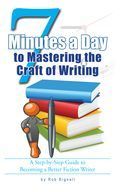 book in my “7 Minutes a Day…” writing guidebook series went on sale today. 7 Minutes a Day to Mastering the Craft of Writing is a practical, how-to guide that takes readers step-by-step through improving their story and fiction writing skills. The book addresses topics such as establishing your own unique voice as a writer, diction, narrative drive, and description, offering more than 150 tips. It is available in both paperback and on Kindle.
book in my “7 Minutes a Day…” writing guidebook series went on sale today. 7 Minutes a Day to Mastering the Craft of Writing is a practical, how-to guide that takes readers step-by-step through improving their story and fiction writing skills. The book addresses topics such as establishing your own unique voice as a writer, diction, narrative drive, and description, offering more than 150 tips. It is available in both paperback and on Kindle.
Need an editor? Having your book, business document or academic paper proofread or edited before submitting it can prove invaluable. In an economic climate where you face heavy competition, your writing needs a second eye to give you the edge. I can provide that second eye.
Related articles
 Get ideas from you head onto paper
Get ideas from you head onto paper Avoid using weak pushbutton words in story
Avoid using weak pushbutton words in story Start your story with solid narrative hook
Start your story with solid narrative hook How long and frequent should author's blog be?
How long and frequent should author's blog be?
November 24, 2013
Five Great Quotations about Characters
“It begins  with a character, usually, and once he stands up on his feet and begins to move, all I can do is trot along behind him with a paper and pencil trying to keep up long enough to put down what he says and does.” – William Faulkner
with a character, usually, and once he stands up on his feet and begins to move, all I can do is trot along behind him with a paper and pencil trying to keep up long enough to put down what he says and does.” – William Faulkner
“My characters are fictional. I get ideas from real people, sometimes, but my characters always exist only in my head.” – S. E. Hinton
“…the thing about great fictional characters from literature, and the reason that they're constantly turned into characters in movies, is that they completely speak to what makes people human.” –Keira Knightley
“When writing a novel a writer should create living people; people not characters. A character is a caricature.” – Ernest Hemingway
“In writing a series of stories about the same characters, plan the whole series in advance in some detail, to avoid contradictions and inconsistencies.” – L. Sprague de Camp
Need an editor? Having your book, business document or academic paper proofread or edited before submitting it can prove invaluable. In an economic climate where you face heavy competition, your writing needs a second eye to give you the edge. I can provide that second eye.
Related articles
 Five great quotations about writer's block
Five great quotations about writer's block Five great quotations about writing
Five great quotations about writing Editor releases first "Hittin' the Trail" guidebook
Editor releases first "Hittin' the Trail" guidebook
November 23, 2013
Make science fiction ‘others’ relevant to readers
No matter how different science fiction characters are from humans – whether they be extraterrestrials, artificial intelligences, or a far future species evolved from Homo sapiens – they must be relevant to readers. That doesn’t necessarily mean that readers identify with those characters, only that those characters “say” something about humanity that the reader then finds relevant.
To achieve that, ask if these non-human “others” in your story serve any of these purposes:
g Metaphors or stand-ins for human characteristics – For example, Mr. Spock with his logic stands for the human philosophy of rationality and logic. HAL 9000 represents how the inability to distinguish between two contradictions can lead to paranoia. The metaphor/stand-on approach is especially useful for writers wishing to criticize a specific human characteristic.
g Mirrors/counterpoints for humans – In “Star Trek,” the Vulcans’ suppression of emotions is a counterpoint to humans’ expression of them. An alien species that develops space travel might consider those races lacking it (such as humans) to be less evolved, just as we might consider technology-vacant Homo erectus to be less evolved than us.
g Shed light on the human condition through their interactions – Data of “Star Trek: The Next Generation” does this by questioning his crewmates about what being human means. Such interactions need not be between the non-human and a human but can be between two of the non-humans; as we learn about them, readers then learn something about themselves.
Arguably, as a human writer, all of your non-human characters can’t help but possess some characteristics of humanity because that’s your only frame of reference to work from. Whether or not that be the case, what matters most to a reader is how relevant you make such characters (Whether or not the nonhuman character has a scientifically plausible basis for existing is important, too, but a topic for a different discussion!).
Need an editor? Having your book, business document or academic paper proofread or edited before submitting it can prove invaluable. In an economic climate where you face heavy competition, your writing needs a second eye to give you the edge. I can provide that second eye.
November 22, 2013
Stand out on Twitter: Tweet a photo instead
Among the  most common concerns I hear from authors is how Twitter has proven to be a fruitless effort in promoting and selling their books. Their tweets are lost in the crowd of thousands of others, authors say, and they get the feeling that their posts are ignored. After all, as one admitted, “I’m deluged all day with tweets and ignore almost all of them myself!”
most common concerns I hear from authors is how Twitter has proven to be a fruitless effort in promoting and selling their books. Their tweets are lost in the crowd of thousands of others, authors say, and they get the feeling that their posts are ignored. After all, as one admitted, “I’m deluged all day with tweets and ignore almost all of them myself!”
At the same time, so many people read tweets that not utilizing the service would be a missed opportunity to connect with potential readers, they add (and if they don’t, as I always remind them). So the challenge is how to make your tweets stand out.
Major magazines, such as the Atlantic Monthly, may have just answered that question. They’ve recently started posting photos with their tweets. Many of them have reported increased retweets and more hits on the article that the tweeted photo links to compared to tweets when no photo is used.
Fortunately, you don’t have to be one of the big guys to tweet a photo. It’s relatively easy and inexpensive to do.
To get started, you’ll need a third-party provider of a photo-posting service. I went with twitpic, which is free and allows you to sign into your account with Twitter, entirely automating the set-up process.
When posting, simply pull the photo used on the page you’re linking to. Then write your tweet and paste the URL into the caption box. Hit “upload” and when that is completed, the tweet is posted.
One problem, though, is twitpic doesn’t shorten the URL of the page you’re linking to, which means you may go over the 140 characters that Twitter allows. A workaround is to enter what you would post on your Twitter site and then cut and paste that into the twitpic caption box.
The tweet via twitpic can be connected to your Facebook page so that it posts there as well, so long as you have a mobile app.
You also can embed a twitpic widget on your blog or website. The widget runs the list of your most current tweets.
Need an editor? Having your book, business document or academic paper proofread or edited before submitting it can prove invaluable. In an economic climate where you face heavy competition, your writing needs a second eye to give you the edge. I can provide that second eye.
Related articles
 Oxford library hosts editor, cousin novelist
Oxford library hosts editor, cousin novelist Place commas inside quotation marks
Place commas inside quotation marks How to promote multiple books on your website
How to promote multiple books on your website Editor interviewed at 'Welcome to the Toi Box'
Editor interviewed at 'Welcome to the Toi Box'
November 21, 2013
Editing client publishes near-future novel
Strobe Witherspoon, 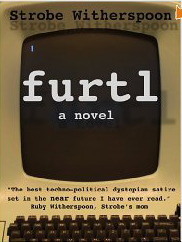 a recent editing client of mine, has published his first novel, the dystopian near-future “furtl”. The book tells the tale of a technogeek who leads a revolution when his former social media/software conglomerate, furtl, gains control of the U.S. government. The satire aptly extrapolates Edwin Snowden’s warnings and fears of how big business and government, virtually indistinguishable from one another, can harness technology to control the population. The book is available online.
a recent editing client of mine, has published his first novel, the dystopian near-future “furtl”. The book tells the tale of a technogeek who leads a revolution when his former social media/software conglomerate, furtl, gains control of the U.S. government. The satire aptly extrapolates Edwin Snowden’s warnings and fears of how big business and government, virtually indistinguishable from one another, can harness technology to control the population. The book is available online.
Need an editor? Having your book, business document or academic paper proofread or edited before submitting it can prove invaluable. In an economic climate where you face heavy competition, your writing needs a second eye to give you the edge. I can provide that second eye.
November 20, 2013
Time to get it right: Past vs. passed
Relatively speaking,  if you use past or passed depends on whether you are using a verb or a noun.
if you use past or passed depends on whether you are using a verb or a noun.
If wanting to show that something has occurred, use the verb passed: The motorcycle passed, and everything quieted once more. (What occurred is the motorcycle went by.).
If wanting to show what you’re referring to, use the noun past: In the past when the road was gravel, motorcycles never went on it. (You’re referring to a specific thing, the past.)
A lot of writers get mixed up with the whole space-time continuum thing, thinking that “past” means something once was in the state of occurring. Leave relativity to Einstein, though, and think noun-verb when deciding which word to use.
Need an editor? Having your book, business document or academic paper proofread or edited before submitting it can prove invaluable. In an economic climate where you face heavy competition, your writing needs a second eye to give you the edge. I can provide that second eye.
Related articles
 Breaking the barrier: Hurdle vs. hurtle
Breaking the barrier: Hurdle vs. hurtle All in order: Follow up vs. follow-up vs. followup
All in order: Follow up vs. follow-up vs. followup Improve your writing by dumping fuzzy words
Improve your writing by dumping fuzzy words
November 19, 2013
Ensure descriptive writing serves a purpose
When creating your story’s setting or explaining what your characters are doing, you’ll need to use description. Description is necessary to move along the plot and to create tone. You even can create resonance in your writing by layering description with symbolic meaning – but more on that later. 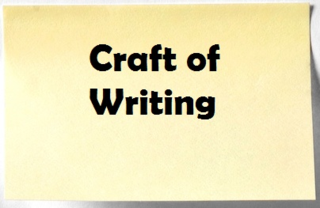
When writing description, always make sure it serves a purpose. Any description should move along the plot, help develop characters and dramatic tension. If it’s solely being used to establish the location of the story or to indicate a background character’s actions, keep the description quick and simple.
You can ensure your description serves a purpose by only using those details that capture the “essence” of a place/moment/character. For example, if a landscape is supposed to be foreboding, then describe it as such by noting the lack of water, the difficult terrain, the strange outcroppings of rock. A foreboding environment would not be lush and comfortably warm.
As reporting this “essence,” always use sensory details rather than internalized ones. Sensory details (green, tart, quiet, rough) are specific rather than general. Internalized details (happy, melancholy, guilty, barbaric) amount to editorializing and give no real impression of what is being described.
If you’ve assembled several details to help relay the essence of a place or a character, you might divide the descriptions into three sections. For example, start with the foreground, then in the next couple of sentences go the middle, and at the paragraph's end go to the background. Or try left-center-right or sky-eye level-ground.
Finally, always remain cautious about offering lengthy descriptions. Descriptions in novels obviously can be longer than those in short stories. Still, the lengthier the description, the greater the chance that the reader will forget what’s going on in the story.
Need an editor? Having your book, business document or academic paper proofread or edited before submitting it can prove invaluable. In an economic climate where you face heavy competition, your writing needs a second eye to give you the edge. I can provide that second eye.
Related articles
 Improve your writing by dumping fuzzy words
Improve your writing by dumping fuzzy words Make final words of your story count
Make final words of your story count How to finally finish your languishing novel
How to finally finish your languishing novel
November 18, 2013
Use broad conflict to set your story in motion
Almost all 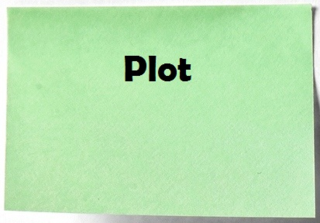 stories force the main character to solve several problems. The issues of where to hide, of finding a way to send a message for help, of obtaining a weapon to defend oneself, all might appear within a single chapter of a novel or even a lone scene of a short story.
stories force the main character to solve several problems. The issues of where to hide, of finding a way to send a message for help, of obtaining a weapon to defend oneself, all might appear within a single chapter of a novel or even a lone scene of a short story.
One core problem, though, sets into motion the need to address these other issues. For example, escaping a murderer might require the main character to hide, to seek help, and to defend herself. This core problem is known as the broad conflict.
The broad conflict is the central problem that the main character must resolve before the story is over. In the above storyline, readers will be interested in the story because they want to see if the main character escapes the would-be murderer. They won’t be satisfied with the story unless it ends with a solution to the problem. Typically, this means the main character must be victorious in the conflict.
The bulk of the plot focuses on the main character addressing this broad conflict, and might unfold this way:
g Inciting incident – The broad conflict and the main character are introduced.
g Rising action scene A – The villain comes closer to achieving his goal as a direct result of the main character’s failure to resolve the broad conflict.
g Rising action scene B – The situation worsens for the main character, whose attempt to resolve the broad conflict only leaves the villain even more implacable.
g Rising action scene A – The main character’s attempt to resolve the broad conflict at best only slows the villain, who now appears to be undefeatable.
g Climax – The main character finds a way to defeat the villain, hence resolving the broad conflict.
Arguably, the broad conflict isn’t what a story ever is really about. It’s just a device to get the story going. After all, in many character-based stories, the story actually centers on an internal conflict within the main character that unless resolved will mean she can’t end the broad conflict. For example, if the main character is opposed to using violence as an ends to a means, her only alternative is to run from the murderer. That only buys her time. To resolve the broad conflict, her beliefs must change so she realizes that sometimes violence is necessary. Ultimately, she must decide to use a weapon to defend herself. For the reader, the most interesting aspect of this story is how the main character “evolves” or changes. Indeed, that’s true for the writer as well, as the message or theme of the story is that sometimes violence must be used to achieve peace.
Need an editor? Having your book, business document or academic paper proofread or edited before submitting it can prove invaluable. In an economic climate where you face heavy competition, your writing needs a second eye to give you the edge. I can provide that second eye.
Related articles
 Make story interesting by establishing stakes
Make story interesting by establishing stakes Center on internal flaw for compelling story
Center on internal flaw for compelling story Write your story's penultimate scene
Write your story's penultimate scene
November 17, 2013
Five Great Quotes about the Passion for Writing
“If there's 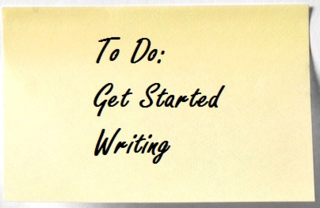 a book that you want to read, but it hasn't been written yet, then you must write it.”
a book that you want to read, but it hasn't been written yet, then you must write it.”
― Toni Morrison
“Ink and paper are sometimes passionate lovers, oftentimes brother and sister, and occasionally mortal enemies.” ― Terri Guillemets
“I have been successful probably because I have always realized that I knew nothing about writing and have merely tried to tell an interesting story entertainingly.” ― Edgar Rice Burroughs
“There is no greater agony than bearing an untold story inside you.” ― Maya Angelou
“You must stay drunk on writing so reality cannot destroy you.” ― Ray Bradbury, “Zen in the Art of Writing”
Need an editor? Having your book, business document or academic paper proofread or edited before submitting it can prove invaluable. In an economic climate where you face heavy competition, your writing needs a second eye to give you the edge. I can provide that second eye.
Related articles
 Get ideas from you head onto paper
Get ideas from you head onto paper Write a great narrative hook for your story
Write a great narrative hook for your story Five great quotations about writing
Five great quotations about writing Five quotations about the business of writing
Five quotations about the business of writing Five great quotes to inspire you to write
Five great quotes to inspire you to write
November 16, 2013
Avoid name drift with proper planning
One of  the most common problems I see in novice writers’ manuscript is something I call “name drift.” This occurs when the spelling of a character’s name changes in the novel, or worse yet, the character suddenly has an entirely different name. Obviously, that can’t occur in a published novel or story unless the author doesn’t mind losing all credibility.
the most common problems I see in novice writers’ manuscript is something I call “name drift.” This occurs when the spelling of a character’s name changes in the novel, or worse yet, the character suddenly has an entirely different name. Obviously, that can’t occur in a published novel or story unless the author doesn’t mind losing all credibility.
Name drift typically occurs because the writer decided to change the character’s name and hasn’t replaced all of the instances of the original one in the manuscript. It also might occur simply because the author has forgotten a character’s name; this usually occurs when a character appeared a few chapters back, so weeks (if not months) may have passed since the author last wrote about him.
Fortunately, there are a couple of ways to avoid name drift:
g Establish the characters’ names before you begin drafting the story. When outlining the story, write up descriptions of the novel’s major characters and establish their full name, title and nickname at that time. Then stick with it.
g Keep a running list of your characters. In a novel (and even in a longer short story), you may need to introduce characters that you didn’t think of when outlining the story. And some authors don’t even bother to outline (which is OK, though I advise that you do). Keep track of your characters by adding them to a running list as they are introduced in the story, and refer back to your list when bringing them into a scene.
Should you decide to change a character’s name midway during your writing, immediately go back and change all uses of the old name in what you’ve already written. You may need to run a global search and replace several times to find all variations of a name. For example, in my character’s original name was Carl Steinar, and I change it to Karl Strumper, I will need to search and replace “Carl” and “Steinar” as well as the possessive forms of those names, such as “Carl’s” and “Steinar’s.” The sooner you do the search and replace, the lower the chances that the wrong name will drift into your final draft.
Need an editor? Having your book, business document or academic paper proofread or edited before submitting it can prove invaluable. In an economic climate where you face heavy competition, your writing needs a second eye to give you the edge. I can provide that second eye.
Related articles
 Get ideas from you head onto paper
Get ideas from you head onto paper Outline your scene when stuck on what to write
Outline your scene when stuck on what to write Delete bogus alternatives from your story
Delete bogus alternatives from your story Limit number of key characters in story
Limit number of key characters in story Delete laugh track from your story
Delete laugh track from your story



